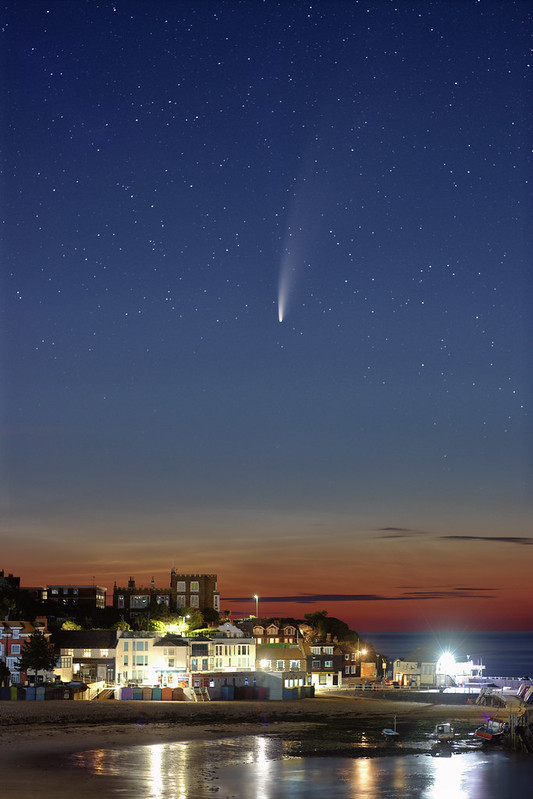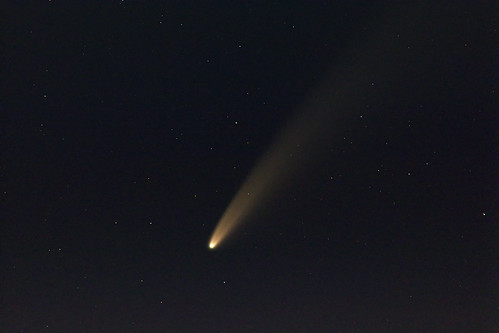"Comets are like cats: they have tails, and they do precisely what they want." - David H. LevyI must admit, when I first heard that comet C/2020 F3 (NEOWISE) was on course to reach naked-eye visibility, my initial reaction was one of mild scepticism. After all, similar predictions had been made about comet C/2019 Y4 ATLAS (which promptly disintegrated) and comet C/2020 F8 SWAN (which also fizzled out). However, NEOWISE didn't just live up to expectations, it surpassed them - becoming certainly the best comet I've seen since Hyakutake and Hale-Bopp, the two Great Comets of the 90s.
Bright though it is however, NEOWISE (named after the space telescope that discovered it) is by no means a Great Comet like those two. Nor is it the first significant comet of the digital age (that honour must go to the spectacular Comet C/2006 P1 McNaught), but - due to its favourable placing for observers in the northern hemisphere - it's likely to become the most photographed comet in history (at least until the next bright one comes along). This is the fifth comet I've pointed a camera at, and it's easily the most photogenic, even if it did require me to leave the house at some very unsociable hours.
Comet NEOWISE should remain visible for the rest of the month, although it will - barring outbursts - become progressively fainter. At time of writing NEOWISE can be found in the late evening sky below Ursa Major (see the links at the end of this post for finder charts). You don't need a telescope to spot it; if your sky is dark enough it should be visible to the naked eye, and a modest pair of binoculars will give a really good view.
You don't necessarily need a long lens either if you want to try and photograph it (the image at the top of this post was taken with a standard 50mm prime). However, you will need a tripod and some means of operating the shutter without touching the camera (either a timer delay or a cable release). As I was shooting at a high ISO I also stacked multiple images and subtracted dark frames to further improve the signal-to-noise ratio. Here's another one taken at 400mm, showing the characteristic golden dust tail:
It's worth making the effort to see Comet NEOWISE at least once before it's gone; after all, it won't return to the inner solar system for nearly 7,000 years.
Links:
How to see Comet NEOWISE over the coming nights (Sky at Night Magazine)
Comet NEOWISE dazzles at dusk (Sky & Telescope)


